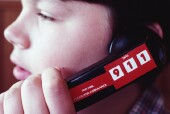
TUESDAY, Dec. 15 (HealthDay News) — Stroke-related disability could be reduced by teaching children how to spot the signs of stroke in relatives and to call 911 immediately, a new study shows.
Emergency medical treatment within three hours of the first stroke symptoms can limit the extent of brain damage and lead to better recovery.
The Kids Identifying and Defeating Stroke (KIDS) project included 515 sixth graders in Texas who were divided into two groups. The students in the intervention group were given four classes about stroke awareness each year during grades 6, 7 and 8.
“As part of the KIDS project, students were also given homework assignments that involved teaching their parents or other adult partners about the signs and symptoms of stroke and the need to call 911 right away if these signs are witnessed,” lead author Kathleen Conley, a professor of health education at Eastern Michigan University in Ypsilanti, said in a news release.
A pretest about stroke knowledge/awareness was given before the study. Preliminary results from a follow-up test after the second year showed improvements in the intervention group students’ knowledge and their intent to call 911 when seeing someone suffering a stroke.
“We are very encouraged by the results and would like to see more investigation in the area of teaching children about recognizing stroke and motivating them to call 911 immediately,” Conley said.
The study is published in the January issue of the journal Health Promotion Practice.
More information
The U.S. National Institute of Neurological Disorders and Stroke outlines the stroke risk factors and symptoms.

